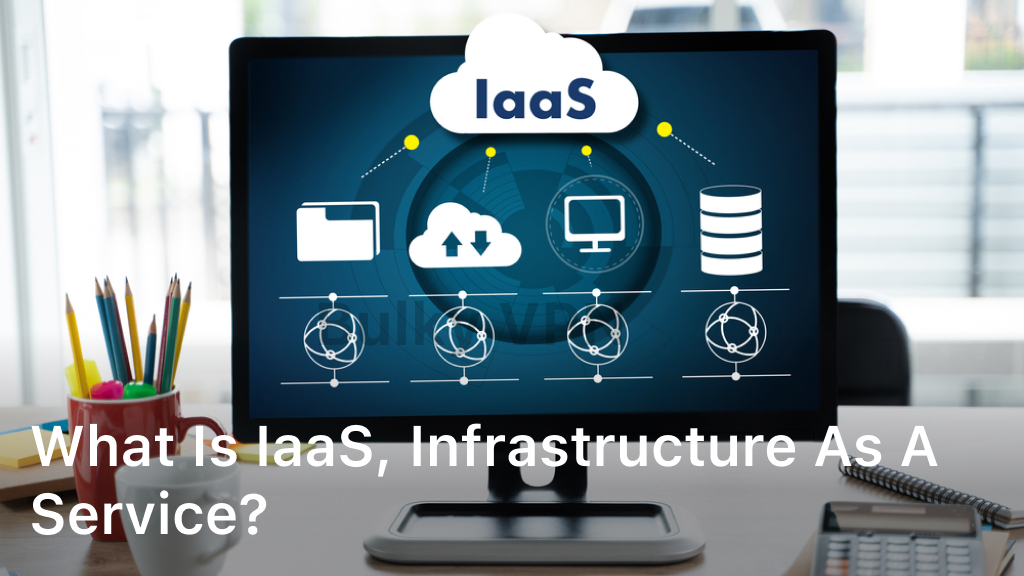What is IaaS, Infrastructure as a Service?
If you are looking for a flexible and cost-effective way to manage your IT infrastructure, IaaS might be the solution you need. IaaS, or Infrastructure as a Service, is a cloud computing model that allows businesses to outsource their entire IT infrastructure, from servers and storage to networking and security. With IaaS, you pay only for the resources that you need and have access to a range of features that can help you scale and innovate efficiently.
In this article, we will explore the definition of IaaS, its key benefits and advantages, and compare it to other cloud computing models such as PaaS and SaaS. We will also mention some of the leading IaaS providers and discuss the importance of IaaS implementation and architecture. So, whether you are a small business owner or an IT professional looking for a new way to manage your infrastructure, this article will provide you with all the information you need to understand IaaS and decide if it is the right solution for your business.
Infrastructure as a Service (IaaS) is a cloud computing model that provides virtualized computing resources over the internet. In simpler terms, it’s like renting a server or data center infrastructure to host your applications and data in a remote environment.
IaaS is an essential component of cloud computing and offers a high level of flexibility, allowing businesses to scale their infrastructure up or down based on their needs. It’s an alternative to traditional on-premise infrastructure hosting that requires significant investment in physical hardware and constant maintenance.
The key characteristic of IaaS is that the provider manages the infrastructure, including physical hardware, networking, storage, and servers. Customers only need to manage their applications and data that run on the infrastructure. This allows businesses to focus on improving their products and services instead of IT infrastructure management.
The implementation of IaaS commonly involves a pay-per-use model, where customers only pay for the resources they use. This results in a cost-effective solution for companies that need to meet varying demands.
Overall, IaaS provides a fundamental service for businesses looking to leverage the benefits of cloud computing. Whether you need to host a single application or an entire infrastructure, IaaS providers offer scalable solutions that can meet your needs.
Advantages and Benefits of IaaS
Infrastructure as a Service (IaaS) provides numerous advantages and benefits for businesses. One key benefit is scalability, as IaaS allows businesses to easily scale their infrastructure up or down based on their needs. This flexibility also increases cost-effectiveness, as businesses only pay for the resources they use.
IaaS also offers improved efficiency, as it eliminates the need for businesses to manage and maintain their own infrastructure. This helps reduce the IT infrastructure management burden and allows businesses to focus on their core competencies and innovation.
Furthermore, IaaS provides businesses with greater flexibility and customization options, enabling them to tailor their infrastructure to meet specific requirements. These benefits make IaaS a preferred choice for businesses looking to improve their overall performance and simplify their IT infrastructure management.
Comparing IaaS to PaaS and SaaS
Infrastructure as a Service (IaaS), Platform as a Service (PaaS), and Software as a Service (SaaS) are three different cloud computing models that offer distinct benefits to businesses.
IaaS is a cloud service model that enables businesses to outsource their IT infrastructure and networking needs to a third-party provider. With IaaS, organizations can enjoy the flexibility of cloud-based infrastructure without having to maintain physical hardware.
PaaS, on the other hand, provides a platform for developers to build and host applications. PaaS providers offer pre-configured software development environments, which save developers time and effort in setting up their own.
SaaS, as the name suggests, is a cloud-based software delivery model that allows businesses to use applications over the internet. With SaaS, all software maintenance and updates are taken care of by the provider, freeing up businesses from the burden of managing their own software.
When it comes to choosing between IaaS, PaaS, and SaaS, businesses should consider their unique needs and priorities. IaaS may be a good fit for organizations that require greater control and customization over their infrastructure. PaaS is well-suited for development teams who need a pre-built software development environment. Finally, SaaS may be a good option for businesses that want to enjoy the benefits of software applications without the hassle of managing them.
In conclusion, while IaaS, PaaS, and SaaS share some similarities as cloud computing models, they offer different features and benefits. Understanding the differences between these models can help businesses make informed decisions about which one best suits their needs.
Conclusion
As we come to the end of this article, we hope that you now have a better understanding of what IaaS is and how it can benefit your business. With IaaS, you can leverage the power of cloud computing to scale up your business operations and innovate at a much faster pace.
Whether you are a small startup or an established enterprise, IaaS can help you reduce your infrastructure costs and increase your overall efficiency. By outsourcing your infrastructure management to a trusted provider, you can focus on your core business activities and leave the technical details to the experts.
With its flexible architecture and customizable features, IaaS can be adapted to suit your specific business needs and enable you to achieve your goals faster. So, if you are looking to take your business to the next level, we highly recommend exploring the benefits of IaaS today.
FAQ
What is IaaS, infrastructure as a service?
Infrastructure as a Service (IaaS) is a cloud computing model that provides virtualized computing resources over the internet. With IaaS, businesses can rent and manage their essential IT infrastructure, including servers, storage, and networking components, from a service provider. This allows organizations to scale their infrastructure easily and pay only for the resources they use, eliminating the need for costly on-premises hardware and maintenance.
What are the advantages and benefits of IaaS?
IaaS offers numerous advantages and benefits for businesses. Firstly, it provides scalability, allowing organizations to quickly expand or reduce their infrastructure according to their needs. Secondly, it is cost-effective as it eliminates the need to invest in physical hardware and infrastructure maintenance. Additionally, IaaS offers flexibility, enabling businesses to easily customize their IT environment. It also improves efficiency by offloading the burden of infrastructure management. Lastly, IaaS enhances disaster recovery and data backup capabilities.
How does IaaS compare to PaaS and SaaS?
While IaaS provides virtualized infrastructure resources, PaaS (Platform as a Service) offers a platform for developing, running, and managing applications without the need to worry about infrastructure. On the other hand, SaaS (Software as a Service) delivers ready-to-use software applications to end-users over the internet. The main difference lies in the level of control and management responsibility. IaaS provides the most control and customization options, followed by PaaS, while SaaS requires the least management and provides a ready-made solution. The choice between these models depends on the specific needs and preferences of businesses.
Which are some notable IaaS providers?
Some prominent IaaS providers in the market include Amazon Web Services (AWS), Microsoft Azure, Google Cloud Platform, IBM Cloud, and Oracle Cloud Infrastructure. These providers offer a wide range of infrastructure services, including virtual machines, storage solutions, and networking capabilities, to cater to the diverse needs of businesses.
How is IaaS implemented and what is its architecture like?
IaaS implementation involves selecting a suitable IaaS provider, provisioning the required computing resources, and configuring the desired network and storage settings. The provider handles the underlying infrastructure management, ensuring high availability and reliable performance. As for the architecture, IaaS typically consists of physical servers, storage devices, and networking components housed in data centers. The infrastructure is virtualized and accessed by customers through an intuitive web-based interface or APIs.





